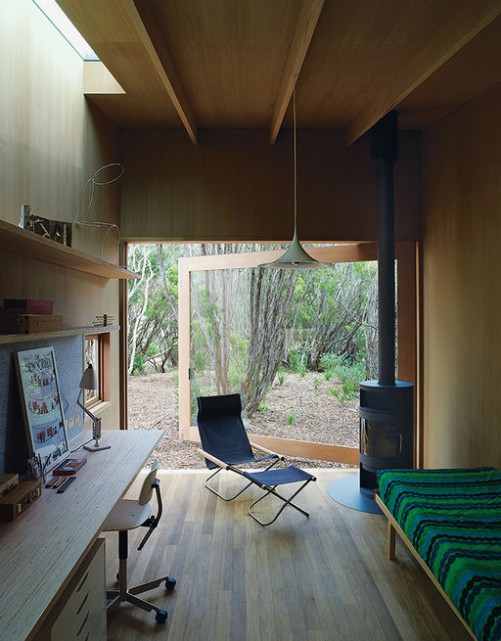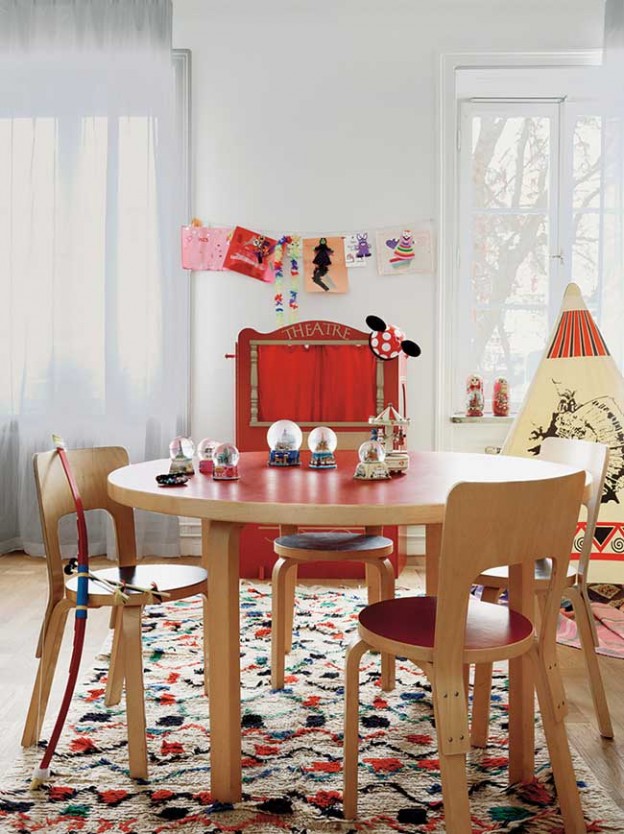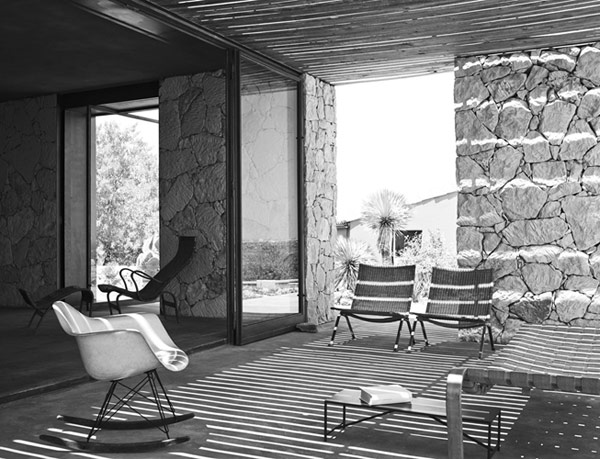The Maison Louis Carré, the eponymously named home of a French art dealer and collector, was designed by master of Finnish modernist architecture (and design hero of mine), Alvar Aalto. Set in the French countryside 60km from Paris, the building and landscaped gardens were designed by Aalto in the late ‘50s, in his characteristically functional, modernist style, using natural materials and organic forms.
A perfect backdrop, then, for the group exhibition of Finnish contemporary sculptural works by glass artist Laura Laine, textile designer Kustaa Saksi and sculptor and ceramicist Kim Simonsson.
‘While working with different materials, the artists have a common material approach, presenting works with a three-dimensional feel that perfectly fit with the characterising organic, functionalist atmosphere of the Aalto-designed surroundings.’
There is something rather wonderful about seeing art and sculpture in a relatable, residential setting rather than the rarefied environment of a white-walled gallery. Aalto’s interiors are typically congenial and light-filled and as was his way, everything down to the light fittings, fixtures and loose furniture were Aalto designed. The house itself emerges from the French countryside, its swooping roof of blue Normandy slate imitating the surrounding landscape, evocative also of the simple form of a Finnish laavu. Walls and base of nearby Chartres limestone create a patchwork with white rendered brick and panels of timber. The pine wood continues within, adding warmth and interest against the expanses of white walls. The roof, a simple but dramatic line when viewed externally, becomes a glorious feature of the large entrance hall on the inside – timber lined, it utilises Aalto’s often used organic curves – as seen in his signature Savoy vase, with its iconic quintet of curves. Column free and with vast expanses of wall for hanging art, this space is the predominant gallery space. The adjoining living room fronts on to the expansive view, with its panorama window, and provides a more intimate domestic setting for the art.
The bespoke light fittings and fixed and moveable furnishings are evident throughout the house, including an early version of Aalto’s Golden Bell pendant light (more Aalto lighting, here), and his classic Stool 60.
Call to the Wild / L’appel de la nature
Maison Louis Carré, 2 chemin du Saint-Sacrement, 78490 Bazoches-sur-Guyonne, France
20th of June to 29th of November 2020 (advanced booking is necessary).
Photographs: Frederik Vercruysse, with thanks.



















































